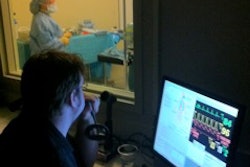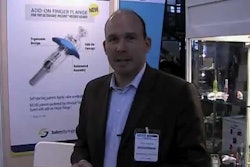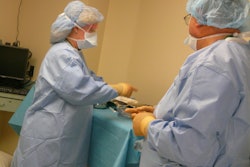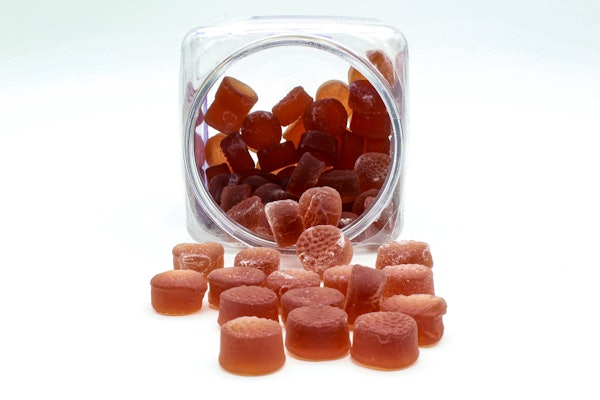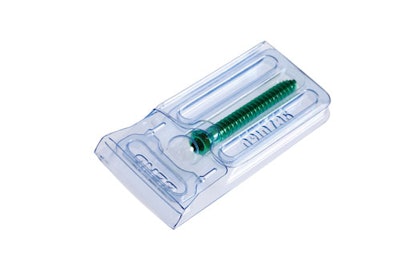
Healthcare Packaging (HCP): What do you and your customers see as the key drivers in medical-device packaging?
Kieran Smith (KS): One is to help reduce hospital-acquired infections, which requires packaging that maintains its integrity, withstands sterilization, and protects against damage to expensive devices. A second trend is easy identification and handling of medical devices that require transparent packaging materials before and after sterilization. And a third driver is cost containment. Eastman is collaborating with packaging engineers early on to understand their needs to work through the packaging design process and material selection, which helps them execute that design without compromising performance.
HCP: Are any customers bringing up sustainability issues at with regard to medical device packaging?
KS: Sustainability is continuing to emerge in this segment. We have begun to work with focus groups, surgeons, and nurses to understand their needs for medical device packaging. That's really where we are starting to hear more about sustainability. We have begun to engage with different group purchasing and healthcare organizations to better understand what the challenges are in the healthcare environment. That is the performance part. The safety of patients and the healthcare professionals who interact with the packaging are the top two priorities. Then the third part is sustainability. There are emerging purchasing programs, such as environmentally preferred purchasing, that examine what happens to the packaging materials from an end-of-life standpoint.
HCP: Can you really make major advancements in the area of sustainability when medical device packaging is often a single-use product?
KS: The question then becomes how do you start to think about the value chain and if there are ways in which you can develop more sustainable solutions with a strong end-of-life story. Already, we're involved in making primary packaging materials more durable so we can reduce the need for secondary packaging. There are also ways to improve processing efficiencies to save energy costs. For years, we have looked at the downguaging and lightweighting of materials, but the materials have to prove themselves in the market. At the end of the day, the integrity of the package is an important need for a medical device manufacturer and hospital staff.
HCP: What are your current responsibilities now with regard to medical device packaging?
KS: I have worked in the medical device industry in the past, but this is my first foray into medical packaging. I have worked in the plastics industry since I graduated from Manchester Metropolitan University in the U.K., where I studied Polymer Science and Technology. Within medical, we talk about both packaging and devices. At Eastman it's my job to help create a strategic vision for those segments and identify new growth opportunities based on needs and trends in those industries. [HCP]
Kieran Smith (KS): One is to help reduce hospital-acquired infections, which requires packaging that maintains its integrity, withstands sterilization, and protects against damage to expensive devices. A second trend is easy identification and handling of medical devices that require transparent packaging materials before and after sterilization. And a third driver is cost containment. Eastman is collaborating with packaging engineers early on to understand their needs to work through the packaging design process and material selection, which helps them execute that design without compromising performance.
HCP: Are any customers bringing up sustainability issues at with regard to medical device packaging?
KS: Sustainability is continuing to emerge in this segment. We have begun to work with focus groups, surgeons, and nurses to understand their needs for medical device packaging. That's really where we are starting to hear more about sustainability. We have begun to engage with different group purchasing and healthcare organizations to better understand what the challenges are in the healthcare environment. That is the performance part. The safety of patients and the healthcare professionals who interact with the packaging are the top two priorities. Then the third part is sustainability. There are emerging purchasing programs, such as environmentally preferred purchasing, that examine what happens to the packaging materials from an end-of-life standpoint.
HCP: Can you really make major advancements in the area of sustainability when medical device packaging is often a single-use product?
KS: The question then becomes how do you start to think about the value chain and if there are ways in which you can develop more sustainable solutions with a strong end-of-life story. Already, we're involved in making primary packaging materials more durable so we can reduce the need for secondary packaging. There are also ways to improve processing efficiencies to save energy costs. For years, we have looked at the downguaging and lightweighting of materials, but the materials have to prove themselves in the market. At the end of the day, the integrity of the package is an important need for a medical device manufacturer and hospital staff.
HCP: What are your current responsibilities now with regard to medical device packaging?
KS: I have worked in the medical device industry in the past, but this is my first foray into medical packaging. I have worked in the plastics industry since I graduated from Manchester Metropolitan University in the U.K., where I studied Polymer Science and Technology. Within medical, we talk about both packaging and devices. At Eastman it's my job to help create a strategic vision for those segments and identify new growth opportunities based on needs and trends in those industries. [HCP]
